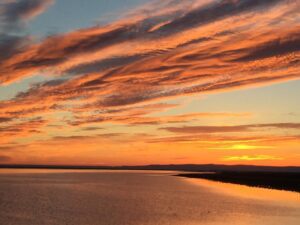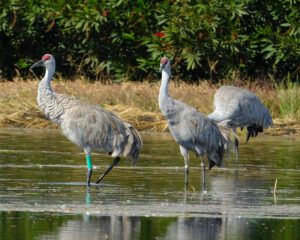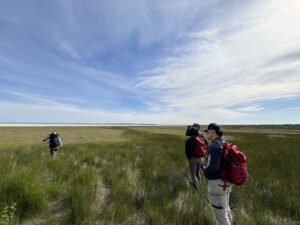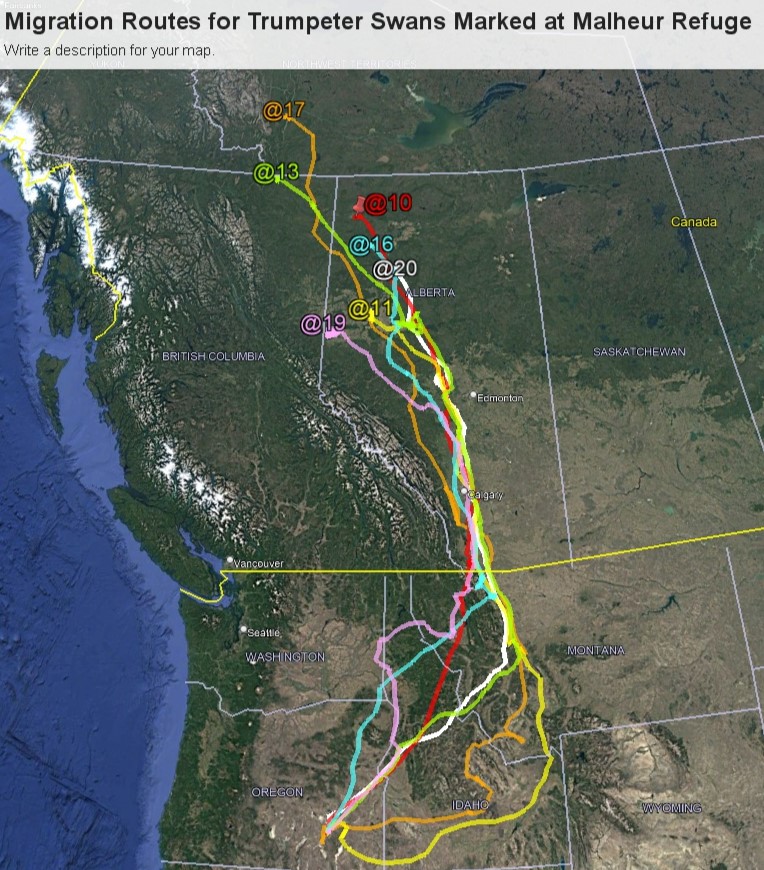Written by Peter Pearsall/Photos by Dominic Bachman, MNWR Fish Biologist
As Malheur Refuge endures a prolonged drought that has intensified over the past two years, Malheur Lake has shrunken from 21,000 surface acres in August 2021 to less than 7,000 surface acres this year. Thankfully, Refuge staff and partners are finding a silver lining to these harsh conditions by making strides toward controlling non-native common carp in Refuge waters.
Common carp were introduced to Harney Basin waterways sometime in the early 1900s, likely as a source of food for landowners. They began showing up at the Refuge in the 1920s, and by the 1950s their expanded numbers were having detrimental effects on aquatic habitats within the Refuge. Common carp are bottom feeders, and their constant rooting about for food clouds the water and smothers aquatic vegetation, depriving it of the sunlight necessary for photosynthesis. As aquatic and emergent vegetation disappeared from Malheur’s waterways during the height of the carp invasion, waterfowl and shorebirds—dependent on these habitat types for feeding and nesting—abandoned the Refuge.
Carp management is therefore a top priority at Malheur Refuge. Past management efforts have involved piscicides such as Rotenone, explosives, electroshocking, fish barriers, hand removal, and hiring a commercial fishing fleet to catch carp and convert them to fertilizer. Common carp, once established in an ecosystem, are incredibly resilient; successful carp removal stories are very few and far between.
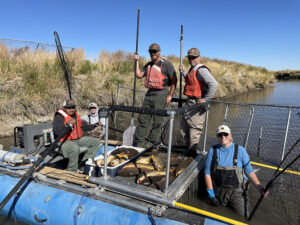
At the Refuge, carp congregate in the lower 5-6 miles of Blitzen River throughout the summer to seek cooler water temperatures. They also spawn there, laying their eggs on aquatic vegetation. With the current low-water conditions at Malheur Lake, carp are finding themselves cornered in the lower reaches of the river, trapped between too-warm lake water and fish passage barriers on the river.
Refuge Fish Biologist Dominic Bachman and others have kicked their carp removal efforts into high gear, using electroshock equipment to stun and capture the fish and remove them from the river by hand. The fish are then loaded onto trucks and buried elsewhere. The work is physically demanding and time-intensive; Bachman and his team have removed more than six tons of carp this year alone.
“Reducing carp numbers in the river is a priority for us while the lake is this low,” said Bachman. “The carp are concentrated in a relatively small area and are affecting the river ecology, clouding up the water and potentially impacting native fish species and the Western ridged mussel, a native bivalve that is a candidate for protection under the Endangered Species Act.”
Another reason to step up removal efforts is to allow emergent vegetation in Malheur Lake to gain a foothold. With no carp in the lake disturbing the shallows, native emergent plants such as cattails and tules are starting to colonize the lake’s shoreline.
“We’re hoping to knock back carp numbers enough to allow the emergent vegetation to succeed,” Bachman said. “With drought likely continuing into the foreseeable future, reducing carp numbers is a management action we can take to make the most out of the circumstances we’re facing.”


